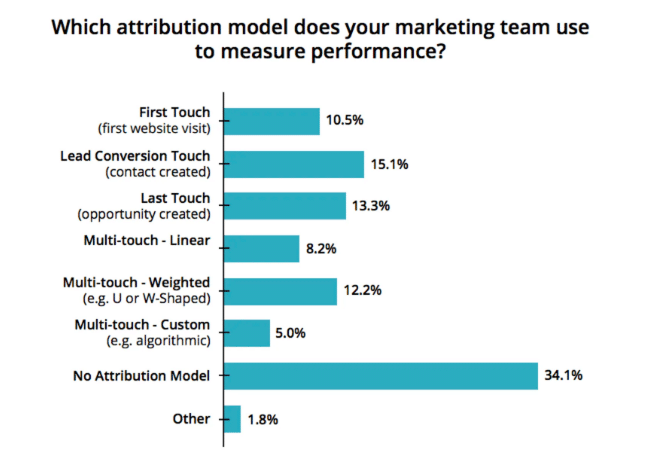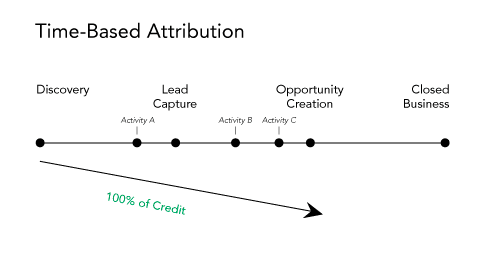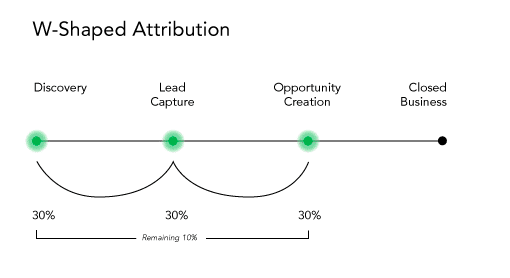
How Marketing Attribution Can Drive Your Marketing Strategy
These days, there is a huge number of activities that go into the average multichannel marketing strategy and budget.
To ensure that you’re spending your time and resources wisely, you must understand what’s working and what isn’t.
This is what marketing attribution can help you to figure out. As you can see, I have been writing about this topic for a long time. It’s relatively complex. And few marketers have it completely figured out.
But if you’re struggling to attribute ROI to your marketing activities, and trying to decide the best way to budget for marketing next year, then this post is for you!
Quick Takeaways:
- Marketing attribution can help you to figure out which of your marketing activities are working well and which aren’t. This means you can apportion more of your budget toward your most effective channels.
- There are several models you can use to calculate the contribution of each of your marketing touch points.
- Your customer journey and your lead generation and nurturing process will help you determine which attribution model is best for your business.
What Is Marketing Attribution?
Marketing attribution is a process by which marketers identify the actions that are driving revenue. In other words, which actions can they attribute to the success of the marketing plan?
Of course, in most cases, a sale or other revenue-generation action can’t be traced back to a single action.
In the age of digital marketing, most consumers will have had several interactions with your brand before they commit to a sale.
In the process of marketing attribution, you can plot out your entire marketing campaign with a series of touch points. Most businesses will be using several marketing channels, and each channel may have a number of touch points.
For example, a customer may search online for information to solve a problem, find your website, read several blog posts on your site, sign up to your mailing list, read several emails, and eventually click through to buy one of your products. Each one of these interactions is an individual touchpoint that contributes toward the final sale.
Each customer encounters these touch points on their journey to making a purchase, and each one contributes in some way to the eventual value to the company.
Marketing attribution enables you to distribute this value across each touchpoint so you can calculate which ones are having the most impact.
Marketing Attribution Models
As most customers encounter several touch points on their journey toward making a purchase, attributing a specific figure to each one is no easy task.
There are several models you can use to calculate how much value to attribute to each marketing touchpoint. Some of these models are as follows:
First-touch attribution
This is one of the simplest attribution models to follow, but one of the least accurate. This model gives all of the credit for attracting the customer and generating revenue to the very first touchpoint that brought them to your business.
In most cases, this means an initial visit to your business website. This is easily discovered by investigating your website analytics data. From here, you can see the portion of traffic that came from organic search, paid search, social channels, referrals, and other sources.
This model can help you identify which channels are most effective for raising awareness of your brand. But a visit to your website doesn’t necessarily result in a sale. So other models are more helpful for analyzing conversions and optimizing the customer journey.
Last-touch attribution
With last-touch attribution, the very last touchpoint that the customer interacts with before buying gets all of the credit for that sale.
This can be helpful for figuring out which of your ads and landing pages are most effective at driving conversions. But it simplifies the customer journey by essentially ignoring all other interactions they had with your brand before getting to that point.
A user might find your website through paid search or social channels, revisit it through organic search, and purchase after clicking a link in an email.
When using a last-touch attribution model, all the credit would be attributed to the email for converting the user, when in fact several marketing channels and touch points contributed.
Lead-conversion attribution
This model considers the touchpoint that generates a lead as the most important in the entire customer journey. In the example above, it would be the point where the customer signs up for the mailing list from which they eventually make a sale.
This is a very popular attribution model (15% of businesses use it to measure performance, which is more than any other model.) But again, it ignores the bigger picture of how the user discovered the brand before converting to a lead, as well as the touchpoints that actually resulted in a sale.

Multi-touch attribution
The evolution of digital marketing has meant it’s now possible to track complex customer journeys. It would be almost impossible to use multi-touch attribution with traditional offline marketing, but software for tracking, measuring, and analyzing user behavior means this task is now much simpler.
There are several models that fall under the umbrella of multi-touch attribution.
- Linear attribution assigns equal credit to each touchpoint in the customer journey.
- Time-based attribution assigns the most credit to either the first or last touchpoint (depending on which is deemed more important for your purposes). This credit then decreases with each action along the timeline from the first discovery to final sale.
- U-shaped attribution gives 40% of the credit to both the first and last touch points and then distributes the remaining 20% evenly between the other touch points.
- W-based attribution assigns a larger proportion of the credit to three touch points — the first discovery, the lead capture, and the final conversion.
- Custom or algorithmic attribution assigns value to each touchpoint in a customized way that suits the individual business or customer journey. This model is the most accurate when done correctly; however, it can be very complicated and usually needs the skills of a data scientist to build correctly.


How to Get Started with Marketing Attribution
Accurate marketing attribution starts with data, so it’s important you have tools in place to collect this data.
Google Analytics is one tool that many businesses use for simpler attribution models, but it can also be used to build a multi-touch model. The data can tell you how people found your site, where they converted into a lead, and the last place they clicked before making a purchase.
You can also follow the individual customer journeys of users through your site to start getting an idea of the various touch points they’re engaging with.
For offline channels and other digital channels external to your website, it can help to create your own customer journey map. This essentially lists all the potential touchpoints that a customer can pass through, from the discovery of your brand to the final sale.
You can then decide which marketing goals are your priority for each campaign (generating leads, conversions, repeat sales, etc.) and choose an attribution model that reflects these goals.
Choosing the Best Attribution Model for Your Business
It’s not a case of one model being superior over the others. Each business must decide which model suits their needs depending on their marketing priorities, type of campaign, and budget.
Not every business will have the resources to custom-build their own algorithm for assigning marketing attribution. But even basic attribution models can help you work out where your budget and efforts are best spent to optimize your strategy.
If you are ready to get more traffic to your site with quality content published consistently, check out our Content Builder Service. Set up a quick consultation, and I’ll send you a free PDF version of my books. Get started today — and generate more traffic and leads for your business.







Cool article Michael. How much weight do you think could be put on attribution when it comes to making decisions? Surely, numbers can never tell the whole story and even if they could, human behavior is rather unpredictable.